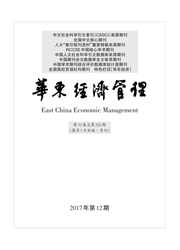

 中文摘要:
中文摘要:
减少碳泄漏是欧盟提出开征边境调节税的理由之一,但关于欧盟碳密集型行业是否发生显著碳泄漏的实证研究则相对较少。本文从双边贸易的视角.对欧盟水泥、铝、钢铁三个碳密集型产业的进出口贸易进行了结构断点检验,发现水泥和铝进出口不存在显著的结构性变化。而钢铁进出口在2003年和2008年存在两个结构断点,在第二个断点处钢铁进口整体增加;本文进一步检验了欧洲气候交易所碳价格与钢铁进出口的格兰杰因果关系.发现钢铁进口的变化由碳价格导致。而出口变化则不是。研究结果表明,EU—ETS的实施对欧盟碳密集型产业影响的范围和程度有限,水泥、铝和钢铁产业中,只在钢铁进口中发现了部分碳泄漏的证据。因此。减少碳泄漏不足以成为欧盟开征边境调节税的充足理由。
 英文摘要:
英文摘要:
To reduce carbon leakages is one of the reasons that proposed by the EU for their border adjustment taxation proposal. However, there are not many empirical evidences supporting significant carbon leakages in the EU carbon-intensive industries. This paper applied structural breakpoint tests in the time series of imports and exports of cement, aluminum and steel industries between EU and China. No significant structural changes were detected in the imports and exports of cement and aluminum industries. However, there proved to be two breakpoints, i.e. , 2003 and 2008, in the import and export of steel industry, in which at the second point the overall level of steel import increased. Furthermore, Granger causality tests were applied to the series of carbon prices from European Climate Exchange and the import and export of steel industry. It was found that the changes of steel import were caused by carbon prices in a sense of Granger, but the export was not. The results of the study showed that the impacts of EU-ETS on the EU carbon- intensive industries were limited both in scope and in extent. Among the three industries of cement, aluminum and steel, partial evidence of carbon leakage was only found in the industry of steel. Therefore, reducing carbon leakage could not be a sound reason for border adjustment taxation proposed by the EU.
 同期刊论文项目
同期刊论文项目
 同项目期刊论文
同项目期刊论文
 期刊信息
期刊信息
